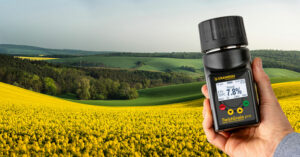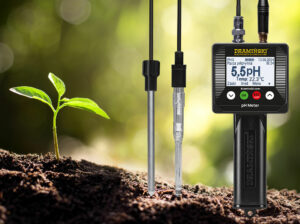Lodged cereal crops: Managing grain moisture and the need for drying

Harvest season is a critical time for farmers—and when the weather turns unfavorable, things can quickly become complicated. Lodged cereal crops are a prime example of this challenge. Not only do they make harvesting more difficult, but they also pose a serious risk to grain quality, especially when it comes to moisture levels.
Why is grain moisture such a key issue in lodged crops? When is aeration enough, and when is drying a must? Here’s what you need to know.

Lodged crops mean higher moisture risk
When grain plants are flattened, they rest closer to the ground—where ventilation is poor, humidity is higher, and air circulation is limited. This results in uneven ripening, increased grain moisture, and a greater risk of fungal diseases. In some cases, grain moisture levels from lodged crops can exceed 18%, which significantly increases post-harvest handling challenges.
The problem isn’t just the extra water in the grain. These conditions also create an environment that favors pre-harvest sprouting, especially in triticale and rye, though wheat can also be affected. Once sprouting begins—even if not yet visible to the naked eye—the grain loses its value for food production.
How to monitor grain moisture
Consistently checking grain moisture levels during harvest is essential, especially when dealing with lodged crops. Use a reliable grain moisture meter, and don’t rely solely on appearances. Grain that looks dry on the outside may still hold significant moisture inside, particularly after recent rain followed by sun exposure.
Elevated grain moisture is more than just a storage concern—it directly affects grain quality. If wet grain isn’t handled quickly, it can develop mold or fungal infections, making it unsuitable for consumption or long-term storage.
When is aeration enough—and when is drying required?
• Moisture up to 18%:
In many cases, good ventilation is sufficient. Promptly move the grain into well-aerated storage—such as silos with forced air or ventilated grain bins. The key is using dry, cool air and ensuring the grain is spread out to allow airflow.
• Moisture above 18%:
Here, natural ventilation isn’t enough. Grain must be dried in a dryer at around 85°C (185°F) to prevent spoilage. Just as important: once drying is complete, cool the grain before moving it into long-term storage. Skipping this step can lead to condensation and new moisture problems.

Risks of high-moisture grain
Leaving wet grain untreated can lead to a host of issues:
• Pre-harvest sprouting: A major concern in cereals like rye and triticale, though wheat can also be affected. Even early-stage sprouting, which isn’t always visible, can reduce baking quality. A falling number test (measuring alpha-amylase activity) is the best way to detect this issue.
• Fungal contamination: Conditions in lodged fields make grains more vulnerable to diseases such as septoria or fusarium. These pathogens often go unnoticed at first but can significantly reduce grain quality and safety.

Can you still use grain from lodged fields?
Yes—but not always for its original purpose. Grain that no longer meets food-grade standards can often still be used as animal feed. However, it’s crucial to dry and cool it immediately after harvest to avoid further deterioration.
Also worth noting: sprouted grain, especially rye, may have higher nutritional content—but it should never be the sole ingredient in livestock feed. It’s best used as a supplementary component in a balanced feed mix.



